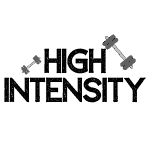my journal has been getting way off track so i am posting this reply to Jeff here.
Jeff said . . . “OK sorry, my bad. I assumed you were talking about “intensity techinques” done at the end of the set to failure. I assumed as much because thatŒs what the majority of people do. YouŒre right, that example above does not increase the volume but increases the intensity (%1RM). It does not, however, increase the HIT definition of “intensity,” as 100% effort is 100% effort.”
ah, yes BUT the problem is that is not the HD/HIT definition of “Intensity”, at least not as how i understand it.
I think Arthur Jones confused the issue by referring to intensity as “outright hard work” which is at best vague and misleading.
anyway, I′m sure i am not going to word this as well as Darden or Mentzer ever could but here goes . . .
HD/HIT is based on the overriding principal that maximum muscular contractions are the best, most efficient way to stimulate increases in size and strength. Because muscle fibers work in an “all-or-nothing” fashion, one needs to train to momentary muscular failure in order to cause the maximum contraction of the greatest number of fibers in any given movement. In other words the greater the demand (stress) placed on the muscles, the more fibers in that muscle that will be put to use at 100% their momentary ability, which would stimulate the greatest increases in size and strength. Training to (and sometimes beyond) the limits of our momentary ability is a way to achieve that.
To put more simply, effort is the means not the end. A person can train with a very high degree of effort and not come anywhere near utilizing maximum muscular contractions which means they are not training in a high intensity fashion.
so in a nutshell . . .
Intensity= degree of EFFORT exerted<– incorrect!
Intensity= degree of STRESS placed on the muscles<– correct!
in fact it might have been better to call it “High Stress Training” instead but that doesnt sound nearly as catchy!
so as I understand it, the difference between HD/HIT and most other training methods is:
doing the final set of 5×5 with 85% of 1RM, each rep would be of equal intensity because intensity is defined as %1RM. (even if the 5th rep equaled failure)
doing a HD/HIT set where 5 reps equals failure, each rep becomes increasingly more stressful (intense) with the 5th rep being the most stressful (high-intensity) because it contains the most demanding, i.e. hardest muscular contraction in the set.
This is why my example using static training on leg extensions does indeed increase the intensity per the HD/HIT definition of the word. The number of fibers called into play with a resistance where one 30-second static rep will equal failure is greater than the fibers called into play in a set of normal positive fashion leg extensions where the resistance makes the 10th rep equal failure, because we are stonger in our static strength than we are in our positive strength. The stress placed on the muscles is greater, therefore the intensity of the contraction is also greater.
the same holds true for different movements. Obviously, if one is using the HD/HIT definition of intensity, a set of 10 reps to failure in the squat is more intense than a 10-rep set to failure of a concentration curl because more and alrger muscles are called into play to contract maximully in a squat than in any kind of curl. For the same reason the squat is a more overall productive exercise than the concentration curl but also again for the same reason it places a greater demand on the recovery of the trainer as well.
It is this that seperates a bodybuilder from a powerlifter. PLer′s are concerned with getting the heaviest weight possible from point A to point B.
A BBer is, or should be, concerned with placing the greatest amount of stress on the muscles targeted in order to induce the greatest number of fibers to contract so that the greatest amount of increases in size and strength will be stimulated during the workout. Poundages are a BBers tools not his/her master.
that′s my understanding of the HIT definition of intensity. I′ll probably think of some aspect i overlooked or some way i worded something that is misrepresenting my thoughts in some way but oh well, we′ll see, lol!
having said all this, i do not believe HD/HIT will work for everyone. There are a lot of people who, for whatever reason(s) will not train to true muscular failure, will not exert the effort required to stress their muscles intensely enough to stimulate them to adapt and therefore will receive little benefit from the short, infrequent training sessions. Arnold was a perfect example of someone who simply refused to work as hard as HIT requires when he spent a week with Arthur Jones in the early 70′s.
the replies to this should be really interesting!
